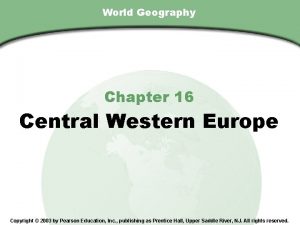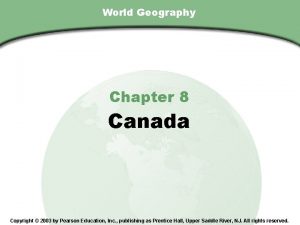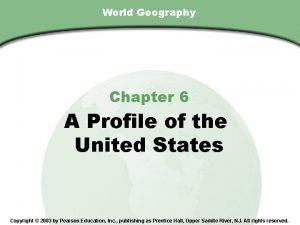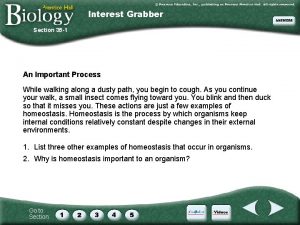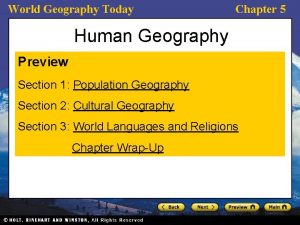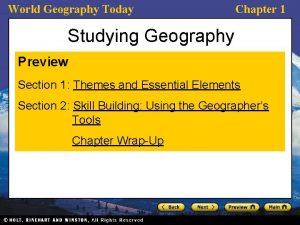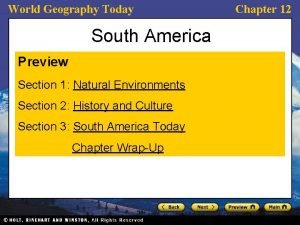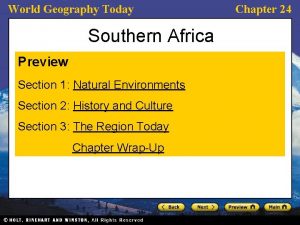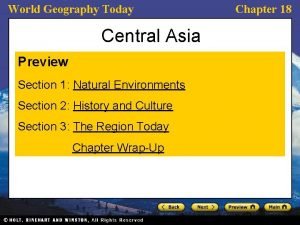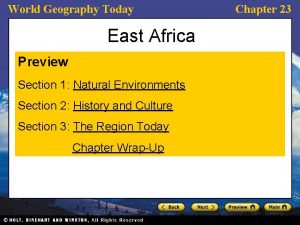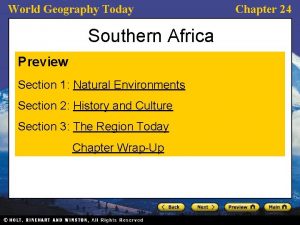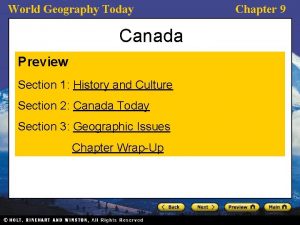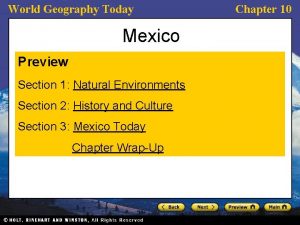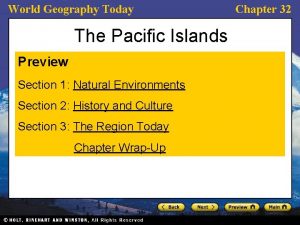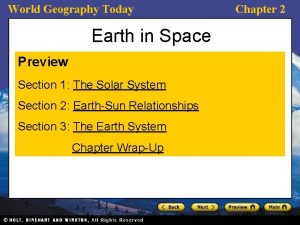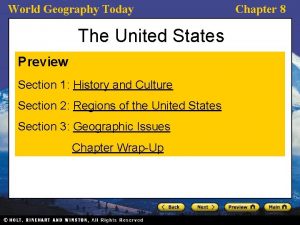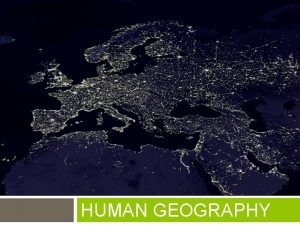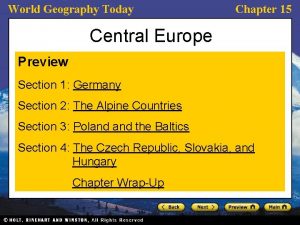World Geography Today Human Systems Preview Section 1
















- Slides: 16

World Geography Today Human Systems Preview Section 1: Economic Geography Section 2: Urban and Rural Geography Section 3: Political Geography Chapter Wrap-Up Chapter 6

World Geography Today Chapter 6 Section 1: Economic Geography Read to Discover • What are three main types of economic systems? • How are developed countries and developing countries different?

World Geography Today Chapter 6 Section 1: Economic Geography Question What words or phrases describe three main types of economic systems?

World Geography Today Chapter 6 Section 1: Economic Geography Economy Motivator Command Location People make goods for themselves or their families with little surplus. Mostly in poor countries and rural areas Profit People freely choose what to buy and sell. Most of the world’s rich countries Government regulations The government establishes products, locations, and prices. Communist countries Traditional Survival or Subsistence Market Description

World Geography Today Chapter 6 Section 1: Economic Geography Differences in Levels of Development • Developed countries • High levels of industrialization • High standards of living, education, and health care • Good infrastructure, with global market economies • Developing countries • Poorer nations, with lower standards of living, education, and health care • Based mainly on farming, with fewer jobs in services or manufacturing • Includes most of Africa, Asia, Central and South America, Pacific Islands

World Geography Today Chapter 6 Section 2: Urban and Rural Geography Read to Discover • How have people used land throughout human history? • How does urban geography describe human settlements? • What are some of the ways people use land in rural areas?

World Geography Today Chapter 6 Section 2: Urban and Rural Geography Question How have people used land throughout human history?

World Geography Today Chapter 6 Section 2: Urban and Rural Geography Agriculture and Human History Hunter-gatherers move with the seasons in search of food. Humans domesticate plants and animals. People develop agriculture and transform their environments. Agriculture provides surplus food and allows people to learn new crafts and skills. Towns and cities grow as civilizations develop. Trade between cities increases cultural diffusion.

World Geography Today Chapter 6 Section 2: Urban and Rural Geography Urban Geography • Urban geography (the geography of cities) describes urban settlements in various ways: • Location • Size and distribution • Land use • Urban problems

World Geography Today Chapter 6 Section 2: Urban and Rural Geography Rural Land Use • The key economic activity is agriculture. • Subsistence—Food produced by a family for its own needs • Market-oriented—Products grown to sell to consumers • Rural land is also used forestry, mining, and recreation.

World Geography Today Chapter 6 Section 3: Political Geography Read to Discover • How are government and geography connected? • What are three main types of geographic boundaries? • How do conflict and cooperation affect international relations?

World Geography Today Chapter 6 Section 3: Political Geography Geographers study: • How governments divide and control Earth’s surface • How governments rule and protect their people • How governments interact • How culture influences government

World Geography Today Chapter 6 Section 3: Political Geography Question What are three main types of geographic boundaries?

World Geography Today Chapter 6 Section 3: Political Geography Type of Boundary Description Natural Follow a feature of the landscape U. S. -Mexico border along the Rio Grande Spain-Portugal border Cultural Based on cultural traits such as religion or language Follow regular, geometric patterns such as latitude and longitude U. S. -Canada border Geometric Example

World Geography Today Chapter 6 Section 3: Political Geography Conflict and Cooperation in International Relations • Conflict divides countries, often over issues of nationalism or cultural, political, and economic differences. • Cooperation helps solve political and economic problems and brings countries together.

World Geography Today Chapter 6 Chapter Wrap-Up Understanding the Main Ideas 1. Which type of economic activity is located at the site of the resource being exploited? Which activity can be located almost anywhere? 2. What are some measures of development? 3. How did the development of early cities affect people’s daily lives? 4. How do people satisfy their basic needs with subsistence agriculture? 5. What are some of the ways countries interact with each other?
 Holt world geography today answers
Holt world geography today answers How does wind affect weather and climate
How does wind affect weather and climate Frq examples ap human geography
Frq examples ap human geography 5 themes of geography ap human geography
5 themes of geography ap human geography Ap human geography political geography test
Ap human geography political geography test Human development index definition ap human geography
Human development index definition ap human geography World geography chapter 16 section 1
World geography chapter 16 section 1 World geography chapter 8 section 1
World geography chapter 8 section 1 World geography chapter 6 section 1
World geography chapter 6 section 1 For todays meeting
For todays meeting Have a class today
Have a class today Proposal kickoff meeting agenda
Proposal kickoff meeting agenda Characteristic of fingerprint
Characteristic of fingerprint Today's lesson or today lesson
Today's lesson or today lesson Today's lesson or today lesson
Today's lesson or today lesson Section 35-5 drugs and the nervous system answer key
Section 35-5 drugs and the nervous system answer key Section 35-1 human body systems
Section 35-1 human body systems






